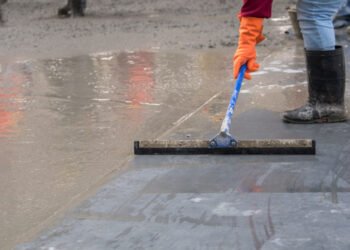Key Takeaways
- Cold Patch is a versatile solution for asphalt repairs, offering ease of use and long-lasting durability.
- The use of this product can be both economically and environmentally advantageous for both individuals and municipalities.
- Innovations in cold patch technology are leading to more sustainable and effective road maintenance solutions.
Understanding Cold Patch Technology
Cold patch asphalt has emerged as an essential component in modern pavement repair solutions due to its adaptability and convenience. Unlike traditional hot mix asphalt, which requires specific conditions for application and often involves heavy machinery, cold patch blends such as EZ Street cold patch can be utilized year-round, irrespective of the weather. This adaptive nature fits the needs of urban infrastructure, which requires rapid responsiveness to damage from fluctuating conditions and heavy usage.
Historically reserved for quick fixes, cold patches have now advanced to provide long-term solutions. Typical applications include seamlessly filling potholes, repairing surface seams, and addressing various surface deformities. This ease of use allows anyone, from homeowners to municipal crews, to effectively repair surfaces without relying on specialized equipment or labor-intensive processes.
Key Advantages of Using Cold Patch
- Weather Resistance: With its robust weather resistance, the cold patch delivers exceptional performance across diverse and unpredictable climates. Whether you encounter the intense heat of summer or the frigid chill of winter, its composition remains stable, preventing the fissures or breakdowns common to other materials. This resilience means roads and surfaces maintain their integrity, reducing the need for frequent patches and repairs, thus lowering overall maintenance costs over time.
- Easy Application: One of the cold patch’s hallmark features is its simplicity in application. The material’s composition allows quick and straightforward use, enabling even those without experience to manage effective repairs. Whether addressing damages on a bustling freeway or a quiet residential street, its rapid application reduces downtime and disruption. This universal usability makes it an attractive choice for municipalities aiming to maintain infrastructure efficiency and safety with minimal disruption.
- Longevity and Durability: Designed for enduring durability, the cold patch provides a resilient, lasting solution, offering peace of mind and budgetary relief. This cold patch is practical and highly cost-effective by minimizing the need for repeated interventions. Studies from resources like For Construction Pros highlight its long-term savings potential, illustrating how its use can reduce repair frequency and maintain road smoothness over extended periods.
Environmental Benefits of Cold Patch Solutions
Given the growing emphasis on sustainable development, environmental benefits are increasingly crucial in evaluating infrastructure materials like asphalt. Cold patch solutions present a compelling case with their green credentials. From their eco-friendly manufacturing processes to their minimized emissions compared to traditional hot mix, they contribute to lowering the overall environmental footprint of road repairs.
Additionally, the durability of cold patch solutions translates into less frequent repairs, less waste, and thus fewer resources consumed. Cities and towns that embrace these materials are crucial in advancing sustainability goals, showcasing a commitment to environmentally responsible road maintenance strategies.
Guide to Successful Cold Patch Applications
- Before commencing repair, evaluate the condition of the repair site and assemble all necessary materials.
- To enhance patch adhesion, ready the impacted surface by eliminating loose material and ensuring it is dry and secure.
- Follow the application process by placing the cold patch into the damaged area, then compacting it firmly to remove any air pockets and solidify placement.
- Once applied, permit adequate curing time under light before subjecting the patch to heavy traffic to enhance durability and efficiency.
Common Challenges and Solutions in Asphalt Repairs
Asphalt repairs often present challenges, from rampant potholes and evolving surface cracks to unanticipated deformations. Identifying the underlying issues early on can prevent them from escalating. Sometimes, these challenges require innovative solutions or expert intervention, mainly when working with old or heavily trafficked surfaces.
Support through online resources and community forums offers valuable insights and shared experiences, which can be invaluable for those undertaking repairs. Being informed and prepared to address the complexities of asphalt maintenance can significantly enhance repair outcomes and efficiency.
Future Trends in Asphalt Repair Technologies
The landscape of asphalt repair technology is rapidly evolving, with innovations promising greener and more effective solutions. New materials are pushing the boundaries of durability and environmental impact. Integrating intelligent technologies into pavement maintenance—such as sensors for monitoring surface conditions, represents the future of infrastructure care. Such advancements proactively anticipate and address repairs, enhancing urban planning and maintenance strategies. Insights from industry leaders, such as those in the Equipment World, emphasize how these technological innovations could inform the next decade of road maintenance and development.
Conclusion: Why Choose Cold Patch?
Cold patch emerges as a dominant force in the quest for reliable, sustainable, cost-effective road repair solutions. Its advantages in adaptability, application ease, and environment-friendly benefits position it head and shoulders above more traditional methods. As we progressively move towards more mindful and innovative urban planning and infrastructure management, adopting materials like the cold patch can be pivotal in shaping a sustainable future for our roads and public spaces.












